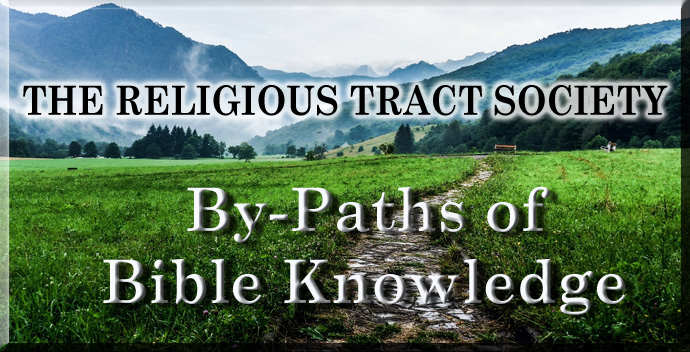|

Monument of a
Hittite king, accompanied by an
inscription in Hittite
hieroglyphics, discovered on the
site of Carchemish and now in
the British Museum.
The object of this little book
is explained by its title.
Discovery after discovery has
been pouring in upon us from
Oriental lands, and the accounts
given only ten years ago of the
results of Oriental research are
already beginning to be
antiquated. It is useful,
therefore, to take stock of our
present knowledge, and to see
how far it bears out that “old
story” which has been
familiar to us from our
childhood. The same spirit of
scepticism which had rejected
the early legends of Greece and
Rome had laid its hands also on
the Old Testament, and had
determined that the sacred
histories themselves were but a
collection of myths and fables.
But suddenly, as with the wand
of a magician, the ancient
eastern world has been
reawakened to life by the spade
of the explorer and the patient
skill of the decipherer, and we
now find ourselves in the
presence of monuments which bear
the names or recount the deeds
of the heroes of Scripture. One
by one these “stones
crying out” have been
examined or more perfectly
explained, while others of equal
importance are being continually
added to them.
What striking confirmations of
the Bible narrative have been
afforded by the latest
discoveries will be seen from
the following pages. In many
cases confirmation has been
accompanied by illustration.
Unexpected light has been thrown
upon facts and statements
hitherto obscure, or a wholly
new explanation has been given
of some event recorded by the
inspired writer. What can be
more startling than the
discovery of the great Hittite
Empire, the very existence of
which had been forgotten, and
which yet once contended on
equal terms with Egypt on the
one side and Assyria on the
other? The allusions to the
Hittites in the Old Testament,
which had been doubted by a
sceptical criticism, have been
shown to be fully in accordance
with the facts, and their true
place in history has been
pointed out.
But the account of the Hittite
Empire is not the only discovery
of the last four or five years
about which this book has to
speak. Inscriptions of Sargon
have cleared up the difficulties
attending the tenth and eleventh
chapters of Isaiah's prophecies,
and have proved that no “ideal” campaign
of an “ideal” Assyrian
king is described in them. The
campaign, on the contrary, was a
very real one, and when Isaiah
delivered his prophecy the
Assyrian monarch was marching
down upon Jerusalem from the
north, and was about to be “the
rod” of God's anger upon
its sins. Ten years before the
overthrow of Sennacherib's army
his father, Sargon, had aptured
Jerusalem, but a “remnant” escaped
the horrors of the siege, and
returned in penitence “unto
the mighty God.”
Perhaps the most remarkable of
recent discoveries is that which
relates to Cyrus and his
conquest of Babylonia. The
history of the conquest as told
by Cyrus himself is now in our
hands, and it has obliged us to
modify many of the views, really
derived from Greek authors,
which we had read into the words
of Scripture. Cyrus, we know now
upon his own authority, was a
polytheist, and not a
Zoroastrian; he was king of
Elam, not of Persia. It was
Elam, and not Persia, as
Isaiah's prophecies declared,
which invaded Babylon. Babylon
itself was taken without a
siege, and Mr. Bosanquet may
therefore have been right in
holding that the Darius of
Daniel was Darius the son of
Hystaspes.
Hardly less interesting has been
the discovery of the inscription
of Siloam, which reveals to us
the very characters used by the
Jews in the time of Isaiah,
perhaps even in the time of
Solomon himself. The discovery
has cast a flood of light on the
early topography of Jerusalem,
and has made it clear as the
daylight that the Jews of the
royal period were not the rude
and barbarous people it has been
the fashion of an unbelieving
criticism to assume, but a
cultured and literary
population. Books must have been
as plentiful among them as they
were in Phœnicia or Assyria;
nor must
we forget the results of the
excavations undertaken last year
in the land of Goshen. Pithom,
the treasure-city built by the
Israelites, has been
disinterred, and the date of the
Exodus has been fixed. M.
Naville has even found there
bricks made without straw.
But the old records of Egypt and
Assyria have a further interest
than a merely historical one.
They tell us what were the
religious doctrines and
aspirations of those who
composed them, and what was
their conception of their duty
towards God and man. We have
only to compare the hymns and
psalms and prayers of these
ancient peoples—seeking “the
Lord, if haply they might feel
after Him and find Him”—with
the fuller lights revealed in
the pages of the Old Testament,
to discover how wide was the
chasm that lay between the two.
The one was seeking what the
other had already found. The
Hebrew prophet was the
forerunner and herald of the
Gospel, and the light shed by
the Gospel had been reflected
back upon him. He saw already “the
Sun of Righteousness” rising
in the east; the psalmist of
Shinar or the devout worshipper
of Asshur were like unto those “upon
whom no day has dawned.”
|

 Home
Home What's New
What's New Bible
Bible Photos
Photos Hiking
Hiking E-Books
E-Books Genealogy
Genealogy Profile
Free Plug-ins You May Need
Profile
Free Plug-ins You May Need
 Get Java
Get Java.png) Get Flash
Get Flash Get 7-Zip
Get 7-Zip Get Acrobat Reader
Get Acrobat Reader Get TheWORD
Get TheWORD

